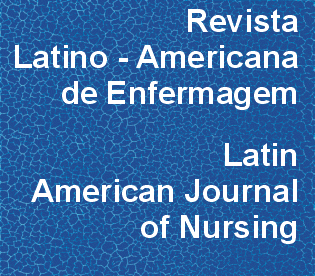Atención de enfermería en la puericultura: Acantose nigricans como marcador de riesgo metabólico
DOI:
https://doi.org/10.1590/0104-1169.2870.2357Resumen
OBJETIVO: analizar la asociación entre la presencia de Acantose nigricans y alteraciones metabólicas en adolescentes con exceso de peso, a fin de verificar la relevancia de la identificación de este marcador en la consulta de enfermería. MÉTODO: estudio transversal realizado entre abril/2009 y abril/2010, con 118 adolescentes, usuarios del Centro de Obesidad Infantil de Campina Grande/PB. Fueron investigadas la presencia de Acantose nigricans y las medidas antropométricas en los sujetos. Fueron aplicados los test: insulina, triglicéridos, HDL-Colesterol, Glucosa y homeostático modelo de evaluación (HOMA-IR). RESULTADOS: fue encontrada asociación entre la presencia de Acantose nigricans y participantes con resistencia en contra de la insulina (p=0,008), síndrome metabólica (p=0,031), triglicéridos elevados (p=0,045) y HDL alterado (p=0,002). CONCLUSIONES: se subraya la sugestión de que la detección/identificación de la Acantose nigricans podrá ser utilizada en la consulta de enfermería como herramienta para la identificación de adolescentes con exceso de peso con mayor riesgo de alteración metabólica.Descargas
Los datos de descarga aún no están disponibles.
Descargas
Publicado
2013-12-01
Número
Sección
Artículos Originales
Licencia
Los derechos de autor son propiedad exclusiva de la Revista Latino-Americana de Enfermagem (RLAE), transferidos a través de la Declaración de Transferencia de Derechos de autor (que está en el formulario individual de declaración) firmada por los autores. Para el uso de artículos, RLAE adopta la Licencia Creative Commons CC BY-NC atribución no comercial (abstracto o código completo de licencia). Con esta licencia es permitido acceder, descargar (download), copiar, imprimir, compartir, reutilizar y distribuir los artículos, desde que para uso no comercial y con citación de la fuente, dando los créditos de autor a la Revista Latino-Americana de Enfermagem. En tales casos, no se necesita permiso de los autores o editores.Cómo citar
Vieira, C. E. N. K., Mariz, L. S., Medeiros, C. C. M., Enders, B. C., & Coura, A. S. (2013). Atención de enfermería en la puericultura: Acantose nigricans como marcador de riesgo metabólico . Revista Latino-Americana De Enfermagem, 21(6), 1220-1227. https://doi.org/10.1590/0104-1169.2870.2357



